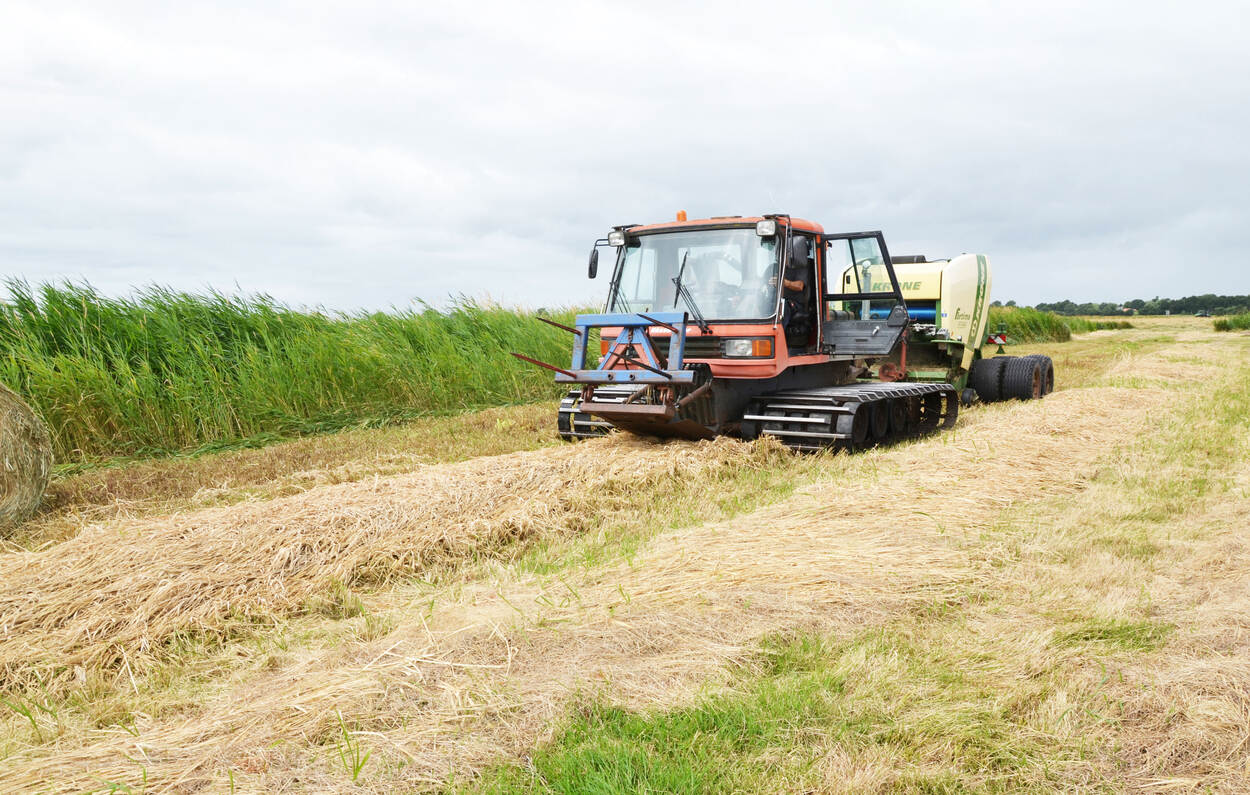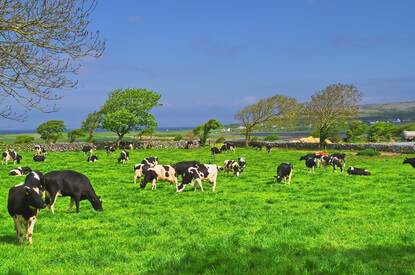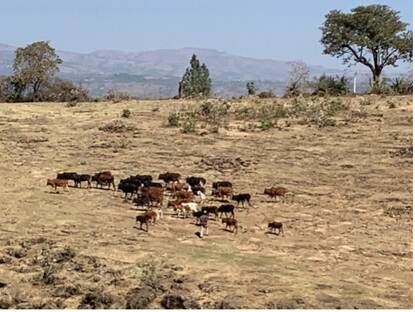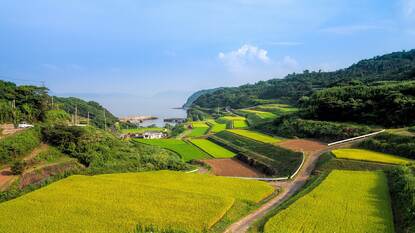Tekst Merijn Bos
Foto Elena Zydek
Germany has embarked on an ambitious endeavor to rewet its 1.8 million hectares of drained peatland. The country recognizes the significance of restoring peatland to achieve its 2045 climate goals. To support this objective, comprehensive strategies and programs have been introduced. However, the impact of rewetting peatland on resident farmers poses one of the most significant challenges to German agriculture.
Experts estimate that the carbon content in German peatland is higher than that of all the forests in Germany, spanning 11.4 million hectares. Not only does peatland serve as the country's largest natural climate buffer, but it also contributes significantly to greenhouse gas emissions, accounting for approximately 7.5% of Germany's total emissions. Consequently, peatland conservation through rewetting is considered the most crucial agricultural climate measure in Germany's national climate strategy.
“Moor muss nass”
The international Greifswald Mire Centre plays a central role in research on rewetting peatlands, and advises governments in peatland conservation strategies. One of its co-founders, the Dutch professor emeritus Hans Joosten, is very clear in his advise: ‘peatland must be wet’ in order to yield maximum environmental benefits. In 2021, Hans Joosten received the German Environmental Prize for his commitment to preserving peatlands.
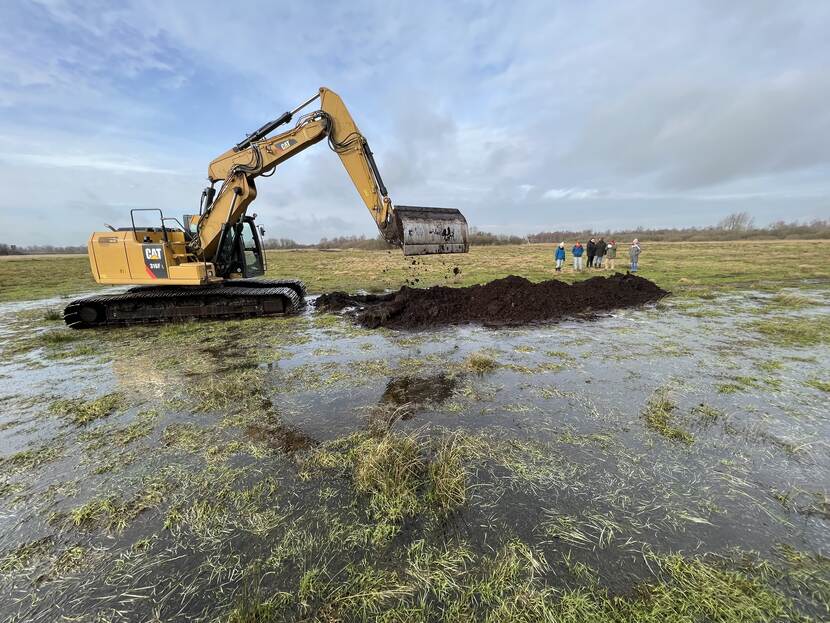
Skepticism and support for rewetting
Because peatlands are predominantly used for farming, rewetting them is mainly a challenge for farmers. Collaboration between nature conservationists, farmers, and supply chain partners, along with government involvement, has facilitated the development of new cultivation systems, value chains, and agricultural business opportunities. Despite some skepticism, innovative entrepreneurship and societal support have been instrumental in fostering the acceptance of wet cultivation systems, such as paludiculture, in which materials are produced in a way suited to the environment and in which economic and ecological considerations are balanced.
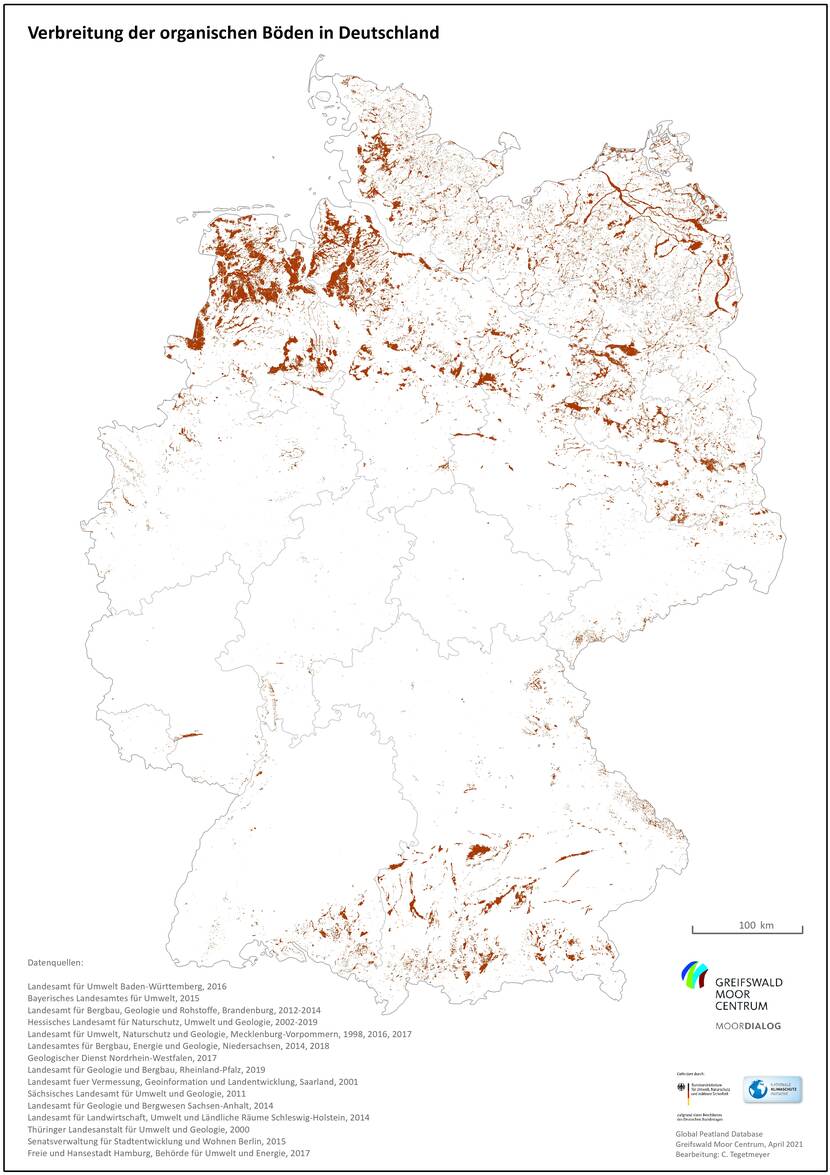
German government strategy
The German government has recently launched comprehensive strategies and programs to facilitate peatland conservation for climate change, adaptation and mitigation. These initiatives include:
- The National Peatland Strategy, introduced on November 9th, 2022, which recognizes the crucial role of peatlands in achieving national climate targets and proposes a range of measures to preserve peatland in Germany.
- The National Water Strategy, implemented on March 15th, 2023, which integrates various national strategies, including those related to climate, water quality, peatland conservation, arable farming, and zero emissions, into a holistic approach for ensuring sufficient and clean water in urban and rural areas.
- The Program for Natural Climate Buffers, launched on March 29th, 2023, which establishes a €4 billion fund to connect nature conservation with climate change mitigation and adaptation. Out of this fund, €1 billion are dedicated to voluntary measures by farmers to raise water levels and develop new value chains for peatland conservation.
Restoration through restored peat dynamics
In the northernmost German state of Schleswig-Holstein, the federal government has acquired a dairy farm situated on 400 hectares of peatland. The water levels on this pilot farm, called KlimaFarm, have been raised to a range of 0 to 10 centimeters belowground. Over the next decade, KlimaFarm will serve as a research station for assessing farming costs and benefits, restoring peatland vegetation, monitoring meadow bird populations, and evaluating greenhouse gas emissions. The objectives of the project are to restore biodiversity and climate functions through restored peat dynamics, reduce 20,000 tons of CO2-equivalents, and establish three to five new agricultural value chains.
‘We have to incorporate new business models on wet peatlands into vocational training and agricultural policy, just like we do with current production systems. That long term perspective is crucial for farmers’ - Dr. Elena Zydek, project leader of the pilot Klimafarm and dairy farmer at the Waldhof Zydek farm.
Compensation for peatland farmers
To acknowledge the societal benefits stemming from farming practices on wet peatland, initiatives have emerged to reward farmers accordingly. The National NGO for Nature Conservation (NABU) introduced the Klimafonds in collaboration with citizens and partners in the agricultural value chain. This fund allows farmers to receive compensation of €65 for every tonne of greenhouse gas reduction through peatland conservation. In 2022, the major supermarket chain REWE joined this initiative and pledged to contribute at least €25 million to the fund in the coming years.
‘The knowledge and experience that we develop make farmers curious, but besides earning money from produced materials, it should also be possible to earn money from the other societal benefits of wet peat soils. New agri-environment schemes by the government are quickly over-subscribed. Recently, over 130 farmers registered for a new scheme set up by the government’ - Anke Nordt, Greifswald University and project leader of the national pilot farm PaludiMV

New strategies on wet peat
In the state of Mecklenburg-Vorpommern, research is underway to explore the possibilities of utilizing wet peatlands to produce bio-based construction materials. The state government has integrated peatland rewetting as a compensatory measure and initiated the PaludiMV national pilot farm, covering over 1300 hectares, to test innovative farm strategies on wet peatland. Collaborating with Greifswald University, the project examines and demonstrates various paludiculture products. “Moor and More”, a construction consultancy bureau in Greifswald, advises on the use of paludiculture materials in construction and showcases their applications through a tiny house built predominantly from products grown in paludicultures.


Demonstrating opportunities of innovative entrepreneurship
Further south, in Brandenburg, where production costs are relatively low, Bas Spanjers of Arge KlimaMoor and Greifswald Mire Center is working to connect producers and processing companies involved in wet cultivation materials. Several companies exemplify the opportunities of innovative entrepreneurship in this area:
- Green Planet Energy GmbH in Hamburg specializes in producing paludigas, a high-end biogas derived from biomass produced on wet peatland.
- Störk GmbH in Nauen utilizes biomass from wet cultivation systems to manufacture products that replace peat in potting soils. This approach contributes to the preservation of peatlands while reducing the need for peat extraction for potting substrates.
- Hiss Reet GmbH in Bad Oldesloe constructs traditional thatched roofs using water reed. The company aims to use reed sourced from German peat regions and actively participates in the ReReet initiative coordinated by Arge KlimaMoor.
- Bio-Lutions GmbH in Schwedt employs biomass from wet cultivation systems in the production of fiber-based materials, including compostable finger food trays and cutlery.
- istraw GmbH in Kirchanschöring procures significant quantities of moor biomass to produce sustainable alternatives for drywall boards and blow-in insulation, specifically for the Berlin market.
‘Setting up new value chains requires commitment from many stakeholders. Companies, politics, governments, research institutes, investors, and importantly: innovative farmers! Bringing these stakeholders together is an exciting challenge!’ - Bas Spanjers, expert in paludicultures at Arge KlimaMoor and Greifswald Mire Center
Contact with the agricultural team in Germany
The Netherlands Agricultural Network in Germany functions as a team of seven colleagues stationed in Berlin and Munchen, working to foster collaboration between Dutch and German governments, research institutes, and companies in sustainable agriculture, nature conservation, food quality, and fisheries. Given Germany's ambitious government, renowned research institutions, and a dynamic food sector serving over 84 million consumers, Germany holds significant importance for the Dutch agrifood sector in terms of collaboration.
For more information, go to:
- The country page of Germany at the website agroberichtenbuitenland.nl of the Netherlands ministry of Agriculture, Nature and Food Quality
- The LinkedIn page of the Netherlands Agricultural Network in Germany
Or you can send an email to agricultural advisor Merijn Bos: merijn.bos@minbuza.nl.
More information
- The Mooratlas (2023) by the Heinrich Böll Stiftung: https://www.boell.de/de/mooratlas.
- Knowledge platform by the Greifswald Mire Cente: https://www.moorwissen.de/.
- National Pilot Farms on rewetted peat soils in Germany: https://www.z-u-g.org/foerderung/pilotvorhaben-moorbodenschutz/.
- The Klimafonds by nature organization NABU: https://www.nabu.de/spenden-und-mitmachen/fuer-unternehmen/31461.html.
- Arge KlimaMoor: https://www.klimamoor-brandenburg.de/en.
- Consultancy bureau Moor and More, www.moor-and-more.de
